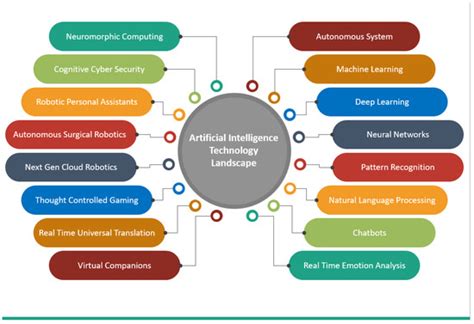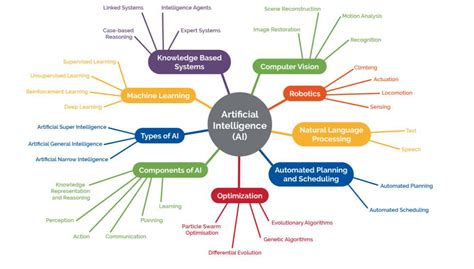Evidence-Based Practice (EBP) has become a cornerstone in modern veterinary medicine, revolutionizing the way we approach pet health and treatment. By integrating the latest research findings with clinical expertise and the unique needs of each patient, EBP ensures that veterinary care is both scientifically sound and highly effective. This approach not only improves diagnostic accuracy but also enhances treatment outcomes, offering pets the best possible care. In this article, we explore the evolution of EBP in veterinary medicine, its foundational principles, and its impact on diagnostics and interventions. We’ll also discuss the challenges of implementing EBP and the ongoing research shaping the future of veterinary care, emphasizing the critical role it plays in advancing pet health.
dominure.com will explore this topic comprehensively.
1. Introduction to Evidence-Based Practice in Veterinary Medicine
Evidence-Based Practice (EBP) in veterinary medicine is an approach that integrates scientific research, clinical expertise, and patient needs to deliver the highest standard of care. Originating from the field of human medicine, EBP has gained traction in veterinary care due to its ability to improve treatment outcomes and ensure that clinical decisions are grounded in the best available evidence. This practice involves a systematic process of evaluating and applying research findings to clinical situations, thereby reducing reliance on anecdotal evidence or outdated methods.
In veterinary medicine, EBP encompasses a wide range of activities, from selecting diagnostic tests based on proven efficacy to choosing treatment protocols that have been validated through rigorous studies. The approach not only enhances the quality of care but also builds confidence among pet owners, knowing that their pets are receiving the most up-to-date and effective treatments. As veterinary medicine continues to evolve, EBP stands at the forefront of this transformation, guiding veterinarians in making informed decisions that lead to better health outcomes for pets. This section delves into the essence of EBP, its adoption in veterinary practice, and its importance in advancing the field.

2. Historical Context of Evidence-Based Practice
The concept of Evidence-Based Practice (EBP) has its roots in human medicine, where it emerged in the early 1990s as a response to the need for more scientifically grounded clinical decision-making. Initially developed to improve patient outcomes in hospitals and clinics, EBP emphasized the importance of integrating the latest research evidence with clinical expertise and patient preferences. This approach marked a significant shift from traditional practices, which often relied on personal experience, intuition, or untested methods.
In veterinary medicine, the adoption of EBP began more gradually but gained momentum as the field recognized the need for a more structured and reliable approach to patient care. Historically, veterinary medicine had relied heavily on empirical knowledge passed down through generations or based on case studies that lacked rigorous scientific validation. The shift toward EBP brought a new level of precision and accountability to veterinary care, encouraging practitioners to question long-held beliefs and seek out evidence-based solutions.
The historical context of EBP in veterinary medicine highlights a critical period of transformation, where the field began to align more closely with the principles of scientific inquiry. This evolution has led to significant advancements in diagnostics, treatment protocols, and overall patient care, making EBP an indispensable part of modern

3. Core Principles of Evidence-Based Practice
The core principles of Evidence-Based Practice (EBP) in veterinary medicine revolve around the integration of three key components: the best available research evidence, clinical expertise, and the individual needs and preferences of the patient and owner. These principles ensure that veterinary care is not only scientifically validated but also tailored to the specific circumstances of each case.
First, EBP prioritizes the use of high-quality research, including clinical trials and systematic reviews, to inform decision-making. This evidence is critically appraised for its validity and applicability to the veterinary context.
Second, clinical expertise plays a vital role, allowing veterinarians to interpret research findings within the framework of their practical experience and knowledge.
Finally, EBP acknowledges the importance of the patient’s unique characteristics, including species, breed, age, and health status, as well as the preferences and values of the pet owner. By balancing these elements, EBP fosters a more personalized and effective approach to veterinary care.

4. Impact of EBP on Veterinary Diagnostics
Evidence-Based Practice (EBP) has significantly transformed veterinary diagnostics by introducing a more rigorous and systematic approach to identifying and addressing health issues in animals. Traditionally, diagnostics in veterinary medicine often relied on a combination of observation, experience, and sometimes trial and error. While these methods have their merits, they could lead to inconsistent outcomes and potential misdiagnoses.
With the advent of EBP, diagnostic processes have become more standardized and reliable. Veterinarians now utilize diagnostic tests and tools that have been scientifically validated through research studies, ensuring that the methods employed are both accurate and effective. This evidence-based approach reduces the likelihood of diagnostic errors and enhances the ability to detect conditions early, leading to more timely and appropriate treatments.
Moreover, EBP encourages continuous evaluation of diagnostic techniques, promoting the adoption of newer, more advanced methods as they become available. This ongoing refinement of diagnostic practices, guided by the latest research, has greatly improved the precision and quality of veterinary care, ultimately benefiting both pets and their owners.
5. Evidence-Based Treatments and Interventions
Evidence-Based Practice (EBP) has revolutionized veterinary treatments and interventions by ensuring that the care provided to animals is grounded in the most current and reliable scientific evidence. This approach moves beyond traditional methods that were often based on anecdotal experience or outdated practices, providing a framework for selecting treatments that are proven to be effective.
In EBP, treatments and interventions are chosen based on a careful assessment of clinical research, which includes studies on the efficacy, safety, and long-term outcomes of various therapies. This evidence is then combined with the veterinarian’s clinical expertise and the specific needs of the patient to develop a tailored treatment plan. For instance, when selecting a medication or surgical procedure, veterinarians can rely on studies that demonstrate the best outcomes for similar cases, ensuring that the chosen intervention is both appropriate and likely to succeed.
Additionally, EBP supports the use of preventative measures and wellness programs that are scientifically validated, helping to reduce the incidence of disease and improve overall animal health. By continually integrating new research findings into practice, veterinarians can offer treatments that are not only effective but also aligned with the latest advancements in veterinary medicine. This evidence-based approach leads to better health outcomes, quicker recoveries, and a higher quality of life for pets.
6. Challenges in Implementing EBP in Veterinary Care
While Evidence-Based Practice (EBP) offers numerous benefits, its implementation in veterinary care is not without challenges. One significant hurdle is the availability and accessibility of high-quality research. Unlike human medicine, where extensive studies and clinical trials are common, veterinary medicine often faces a shortage of robust research data, particularly for less common species or conditions. This can make it difficult for veterinarians to find applicable evidence to inform their decisions.
Another challenge lies in the integration of EBP into daily practice. Veterinarians may encounter time constraints, making it challenging to stay updated with the latest research or to critically appraise studies while managing a busy clinic. Additionally, the cost of implementing new, evidence-based diagnostics and treatments can be a barrier, particularly for small practices or those in rural areas.
There is also a need for ongoing education and training to equip veterinarians with the skills to effectively apply EBP. Overcoming these challenges requires a concerted effort from the veterinary community, including greater investment in research, enhanced access to scientific data, and support for continuing education, to fully realize the potential of EBP in improving pet care.
7. Role of Continuous Research in EBP
Continuous research plays a pivotal role in Evidence-Based Practice (EBP) by providing the foundation for ongoing improvements in veterinary care. As veterinary medicine evolves, new discoveries, techniques, and treatments emerge, necessitating a dynamic approach to integrating the latest evidence into practice. Continuous research ensures that the information used to guide clinical decisions is current, relevant, and reflective of the most recent scientific advancements.
Regular updates from research contribute to refining diagnostic methods, enhancing treatment protocols, and addressing emerging health issues. For instance, new studies can reveal more effective therapies, identify potential side effects, or offer insights into previously unrecognized conditions. This ongoing influx of knowledge helps veterinarians make informed decisions that are not only based on established evidence but also incorporate the latest innovations and trends.
Furthermore, continuous research fosters a culture of critical evaluation and adaptability within the veterinary field. It encourages practitioners to question existing practices, seek out new evidence, and continually improve their methods. By staying engaged with current research, veterinarians can provide the best possible care for their patients, ensuring that treatments and interventions are grounded in the most accurate and up-to-date information available.
8. The Future of Evidence-Based Practice in Veterinary Medicine
The future of Evidence-Based Practice (EBP) in veterinary medicine promises exciting advancements and improvements. As research methodologies continue to evolve, the quality and quantity of evidence available to veterinarians are expected to grow, leading to even more refined and effective treatment protocols. Advances in technology, such as artificial intelligence and machine learning, are likely to play a significant role in analyzing large datasets, identifying patterns, and predicting outcomes, thus enhancing the precision of EBP.
Additionally, there will be a greater emphasis on personalized medicine, where treatments and interventions are tailored to the specific genetic, environmental, and health profiles of individual animals. This approach will be supported by ongoing research into genetic and molecular factors influencing disease and treatment responses.
Collaborative efforts among veterinary researchers, practitioners, and institutions will further drive innovation, fostering a more integrated approach to evidence generation and application. Enhanced training programs and resources will also improve the ability of veterinarians to implement EBP effectively.
Overall, the future of EBP in veterinary medicine holds the promise of more accurate diagnostics, innovative treatments, and improved health outcomes for pets, driven by a commitment to integrating the latest research with clinical expertise.
9. Conclusion: The Critical Role of EBP in Veterinary Care
In conclusion, Evidence-Based Practice (EBP) is essential in advancing veterinary care, offering a structured approach that integrates the best available research, clinical expertise, and patient needs. By relying on scientifically validated methods, EBP ensures that veterinary treatments and diagnostics are grounded in the most current and reliable evidence, leading to improved health outcomes for pets. Despite challenges such as limited research data and the need for ongoing education, the benefits of EBP are profound. It fosters more accurate diagnoses, effective treatments, and a higher standard of care. Looking ahead, continuous research and technological advancements will further enhance the application of EBP, driving innovation and personalized care in veterinary medicine. Embracing EBP not only supports better decision-making and patient outcomes but also promotes a culture of continuous improvement and excellence in veterinary practice, ultimately benefiting both pets and their owners.
dominure.com

